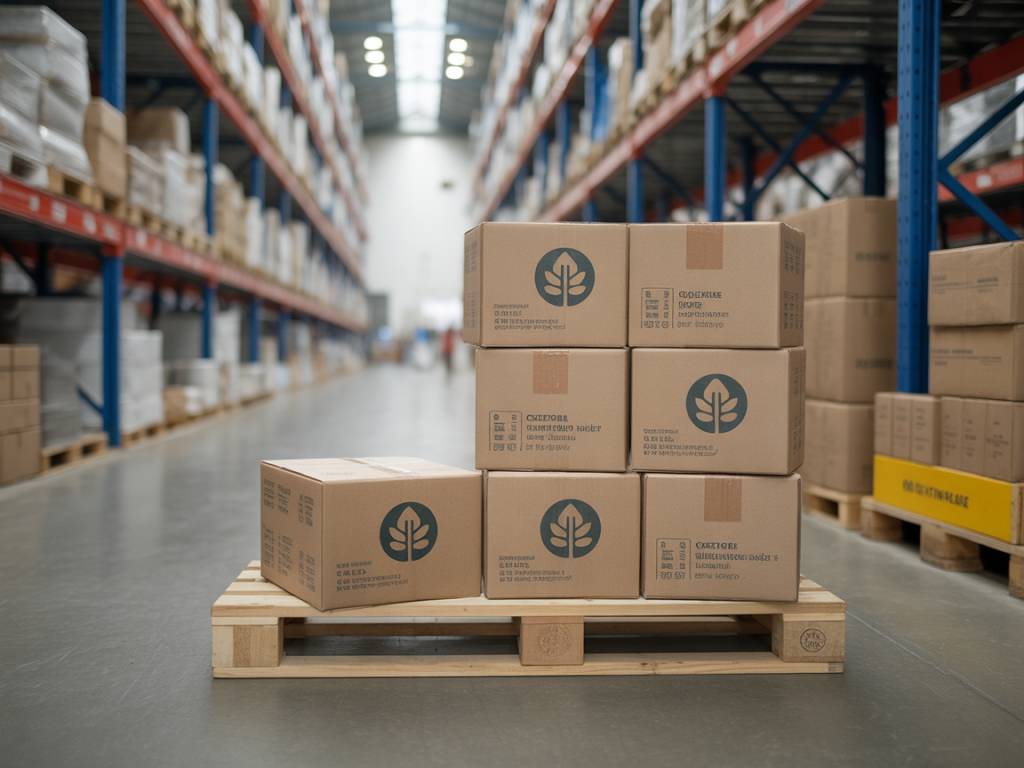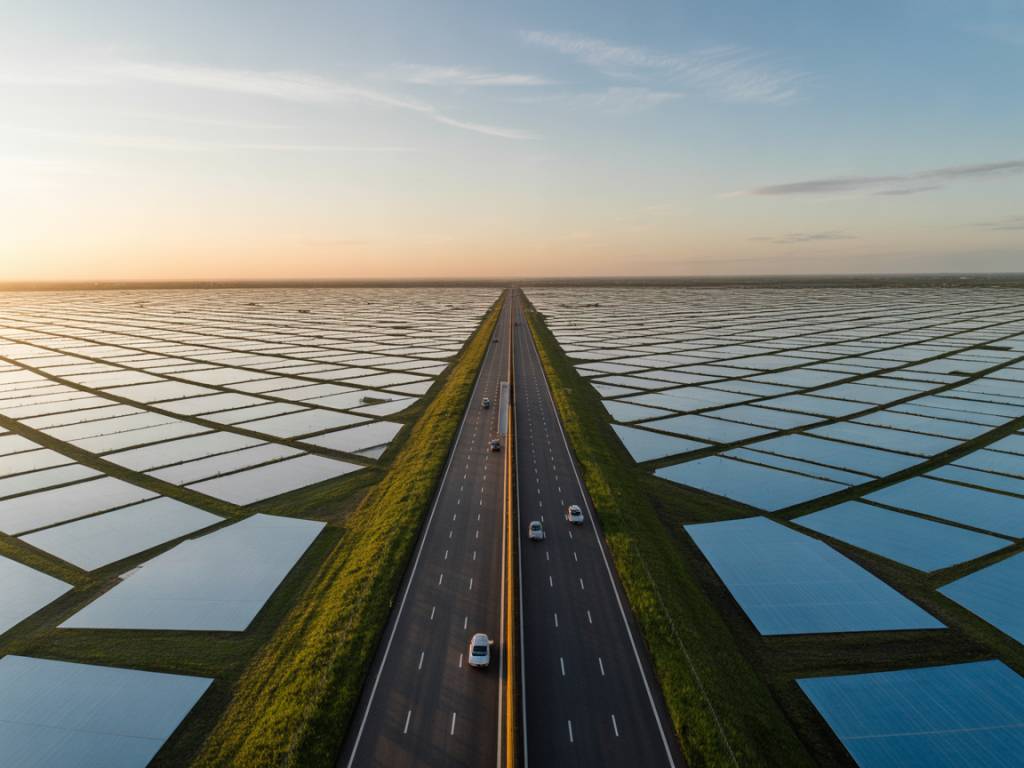As decarbonisation targets accelerate and industries face mounting regulatory pressure, one issue looms larger than ever: packaging waste. Heavy industry – from automotive to machinery manufacturing – has long relied on layers of plastic films, metal fasteners, chemically treated wood and single-use pallets to shield, transport, and store components safely. But times are changing. A new generation of eco-friendly packaging solutions is shaking up the supply chains in even the most rugged industrial sectors.
Why Heavy Industry Can’t Ignore Sustainable Packaging Anymore
Historically, packaging has been an afterthought in heavy industry. The priority? Durability and protection. Sustainability ranked somewhere between “nice to have” and “not a concern.” But today, green logistics is no longer optional. The European Union’s Packaging and Packaging Waste Regulation (PPWR), the rise of ESG reporting, and growing scrutiny from clients and investors are pushing industrial firms to rethink their packaging practices.
It’s no longer just about “recyclable” labels – companies are increasingly measured on recyclability at scale, emissions associated with materials production, and packaging reuse rates. According to a 2023 study by the European Industrial Packaging Association (EIPA), over 70% of OEMs in heavy sectors have now launched working groups focused on sustainable packaging.
And the incentives aren’t only regulatory. Eco-packaging can cut costs in the long run, reduce damage rates during transport, and streamline reverse logistics. In an era marked by raw material volatility and supply chain disruptions, packaging has quietly emerged as an operational lever of transformation.
Materials Making the Difference
Eco-friendly doesn’t mean fragile. A wave of innovation in materials science is delivering performance without environmental cost. Here are some of the frontrunners reshaping industrial packaging:
- Molded pulp and fiber boards: Far from their egg-carton predecessors, these materials can now match wood in terms of strength. Used in crating for precision components in the automotive and machining sectors, they’re biodegradable, stackable, and lightweight.
- Reinforced reusable plastics: Polypropylene crates with RFID tagging are replacing single-use cardboard across parts flows in the construction equipment sector. These containers offer a lifespan of up to 10 years, slashing waste significantly.
- Mycelium-based insulation: Grown from mushroom roots, mycelium packaging is being explored for vibration-sensitive electronics and tooling. It is compostable, heat-resistant, and surprisingly resilient.
- Recycled stretch films: Global chemical players like BASF and Dow are now offering stretch wraps derived from post-consumer waste with 30–50% lower CO₂ emissions per kilogram compared to virgin plastic.
“We used to think that packaging meant compromise: either you went green or you stayed tough,” explains Jean-Louis Marchand, Head of Logistics at a Tier-1 aerospace parts supplier. “Today, we’re integrating circular materials that meet aerospace standards. That was unthinkable five years ago.”
Returnable Packaging Systems: Closing the Loop
Linear logistics – ship it, unwrap it, toss the packaging – is on the way out. Circular models are stepping in, with returnable packaging systems leading the charge. These systems, now increasingly adopted by industrial OEMs, minimize waste by enabling packaging to be reused dozens, even hundreds, of times within closed-loop logistics networks.
Take Schneider Electric’s plant in Le Vaudreuil, France. By switching to a returnable crate system for delivering electrical control panels, they’ve reduced packaging waste by 84%, while cutting transit damage by 17%. The crates, embedded with digital trackers, are monitored via a cloud platform to ensure timely returns and reuse.
Meanwhile, in the mining equipment sector, Swedish firm Epiroc has rolled out a pallet recall program across five European countries. Each steel pallet, fitted with QR codes, is designed for 50+ lifecycles and has an internal EPI tag to be scanned upon arrival. “We cut our wooden pallet consumption by 90%,” notes logistics lead Benita Norrgård. “That’s as much about supply chain resilience as it is about the environment.”
Smart Technologies Optimising Packaging Lifecycle
Smart packaging is not just for consumer goods. Industrial players are adopting tech to monitor, trace, and optimise packaging lifetime and efficiency. Solutions powered by IoT, AI, and blockchain are now emerging to digitise heavy industry packaging strategies.
- Sensor-embedded crates: Detect moisture ingress, temperature deviations, or shock during transit. Especially critical for battery modules and precision optics.
- RFID-enabled returnable circuits: Live tracking of packaging location and condition reduces losses and shrinkage, while improving reverse logistics.
- Blockchain for packaging provenance: Proof of recycled content, authenticity of materials, and automated ESG reporting are now possible. Several automotive OEMs are piloting decentralized platforms tied to their packaging flows.
The result? Reduced manual inspections, fewer repackaging labor hours, and better coordination with third-party logistics providers. As Wouter Dijkstra, supply chain innovation lead at a Dutch industrial conglomerate puts it: “Smart packaging turns a cost center into a data source. It’s transforming how we treat packaging as an asset.”
Barriers Holding Industry Back — and How to Overcome Them
Still, the path to truly sustainable packaging in heavy industry is complex. Three main challenges stand out:
- Cost perceptions: Initial capex for reusable or advanced sustainable materials is higher, deterring some players from adoption. Yet, several TCO analyses show breakeven within 2–3 years depending on rotation rates.
- Standardisation void: Lack of consistent specs for reusable packaging across tiers in supply chains makes scalability tough. Initiatives like Pack4Factory in Germany are working to fix this by developing sector-wide standards for returnable units.
- Logistics complexity: Closed-loop systems require careful reverse logistics planning, often beyond existing 3PL capabilities. Solution? Dedicated packaging-as-a-service (PaaS) models. Startups like Loady or RePack are offering circular packaging infrastructure tailored to industrial flows.
The good news? Solutions exist – but only for those ready to look beyond short-term fixations and integrate packaging into broader sustainability and supply chain resilience strategies.
Real-World Results: Who’s Leading?
Several notable players are already seeing major results from sustainable packaging shifts:
- Volvo Construction Equipment: Switched to 100% recyclable thermoformed trays for hydraulic parts transport. Result: 67% reduction in packaging-related plastic waste in their Ghent facility since 2022.
- Siemens Energy: Implements reusable wooden crates with modular inserts for cross-border turbine transport. Transport packaging ROI reached in under 18 months, with an average of 42 cycles per crate and downtimes improving by 8% due to fewer damaged parts.
- ArcelorMittal: Partnered with packaging tech firm Smurfit Kappa to develop high-strength fiberboard boxes for steel coil transport. Boxes withstand vertical compression of up to 2 tonnes and are biodegradable, replacing legacy metal banding and styrofoam supports.
More than just pilots or PR campaigns, these are scalable, operational initiatives that offer both sustainability and economic advantage. Interestingly, they’re often driven by cross-functional teams: supply chain, quality, HSE, procurement – a sign that packaging innovation is becoming a company-wide strategic lever, not just a logistics topic.
The Road Ahead: Strategic Leverage in a Low-Carbon Economy
As heavy industry moves deeper into its decarbonisation journey, the humble transport box is stepping into the spotlight. What was once a static cost is now an opportunity: to cut emissions, reduce waste, boost efficiency, and even gather data.
Companies that treat packaging as part of their industrial architecture – not an afterthought – stand to gain not just reputational points, but concrete performance improvements. Because in an era of climate audits, material sourcing scrutiny, and just-in-time fragility, every kilogram, every journey, and yes, every crate, counts.
For industrial actors willing to invest in eco-packaging and rethink their logistics architecture accordingly, the question isn’t whether they’ll see a return. It’s: how soon?




